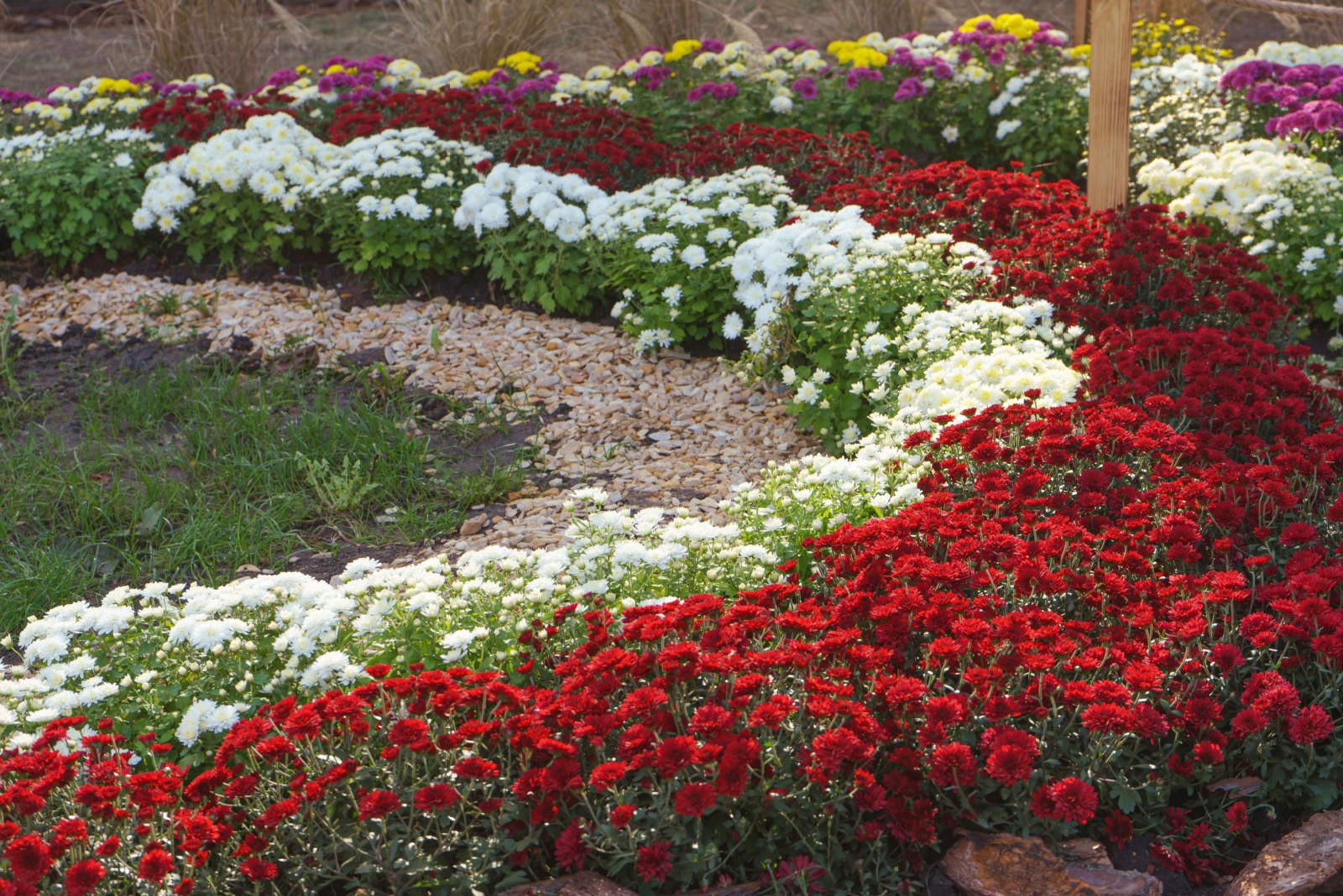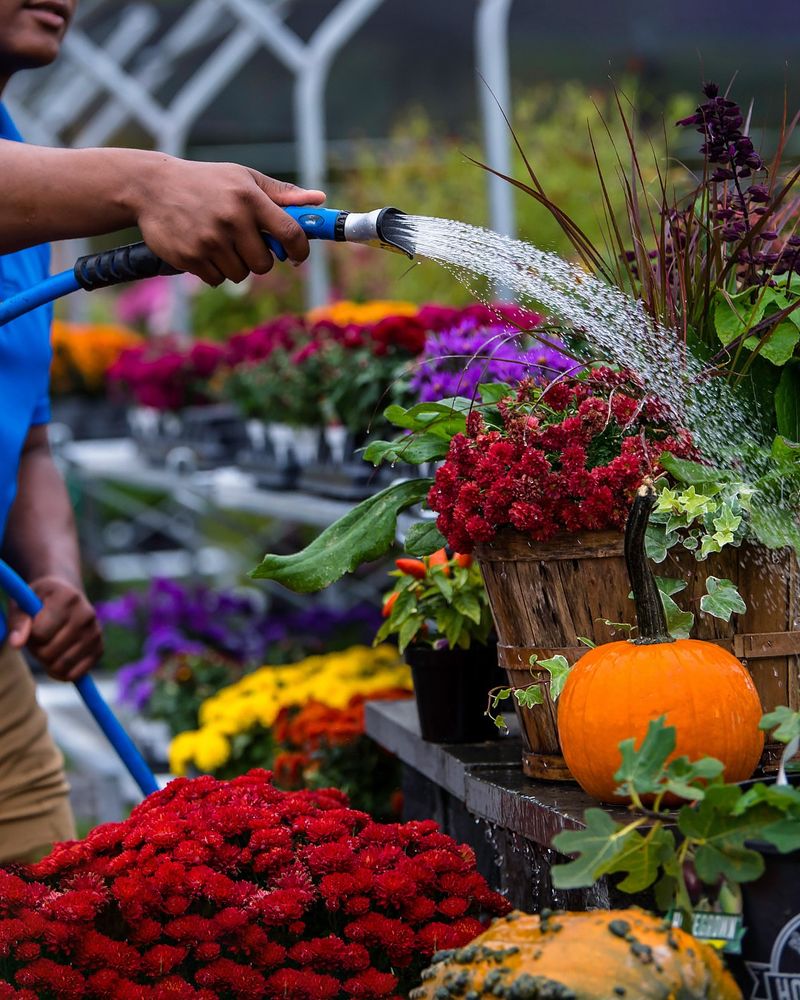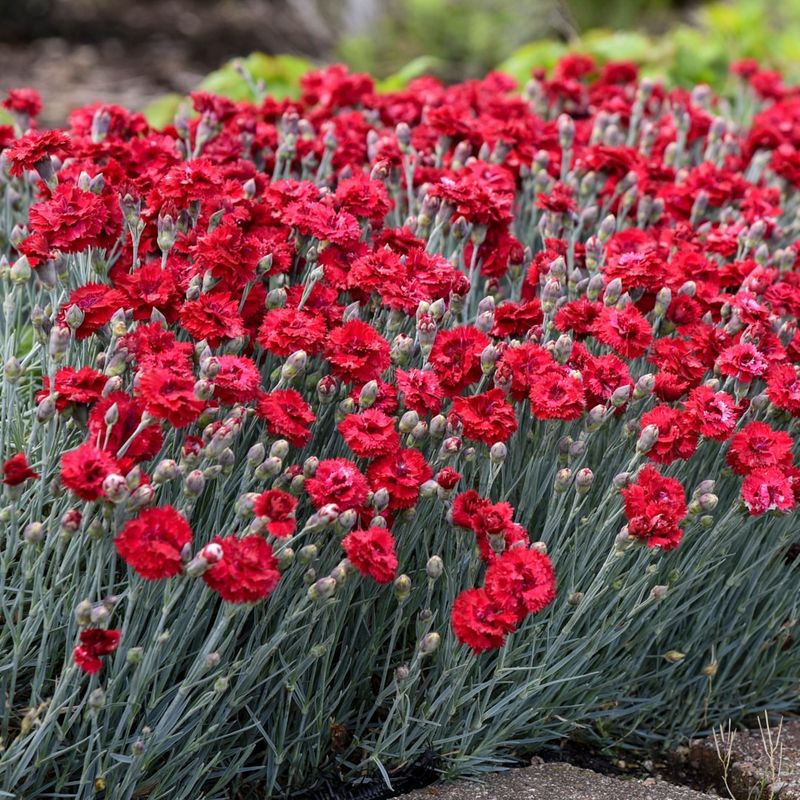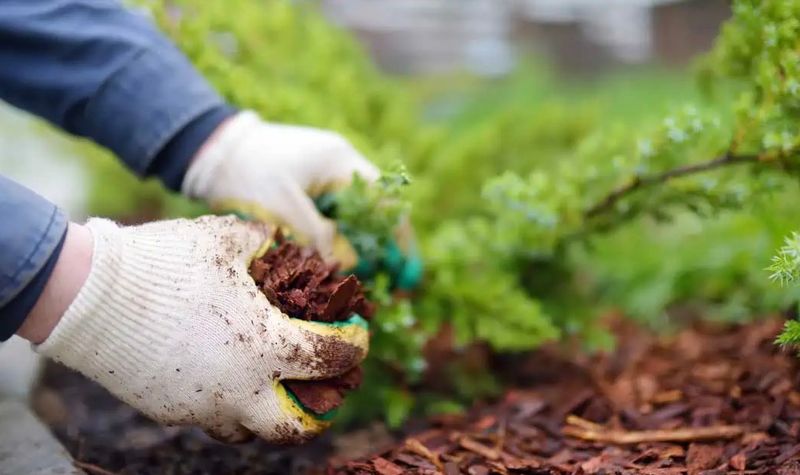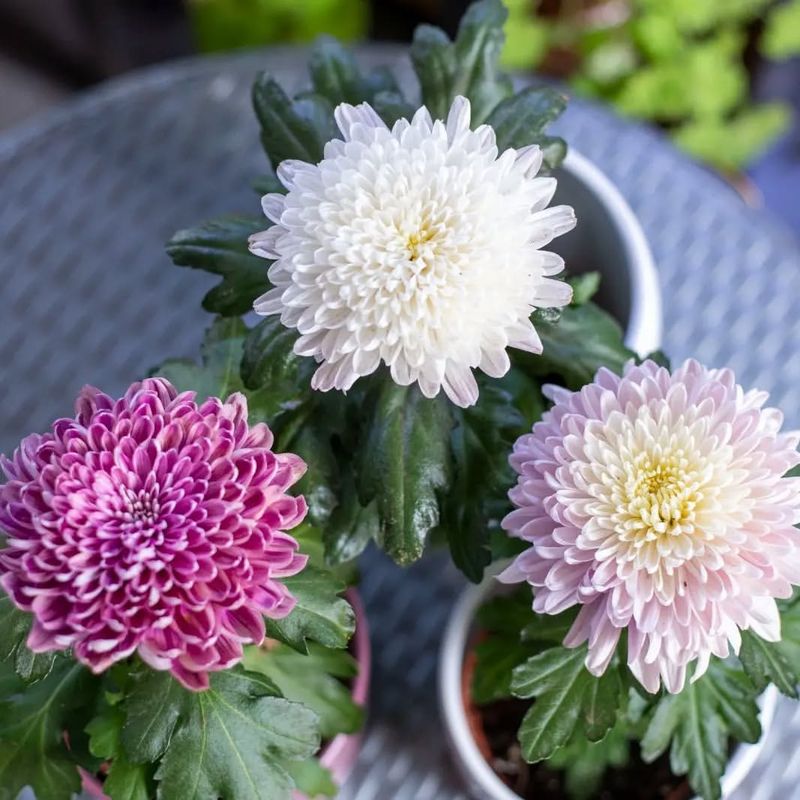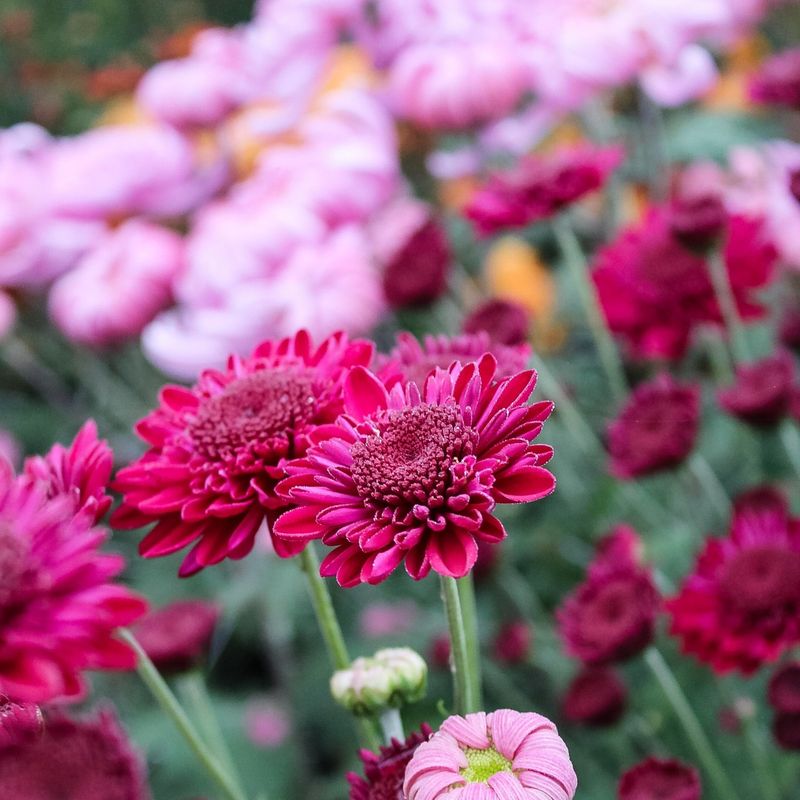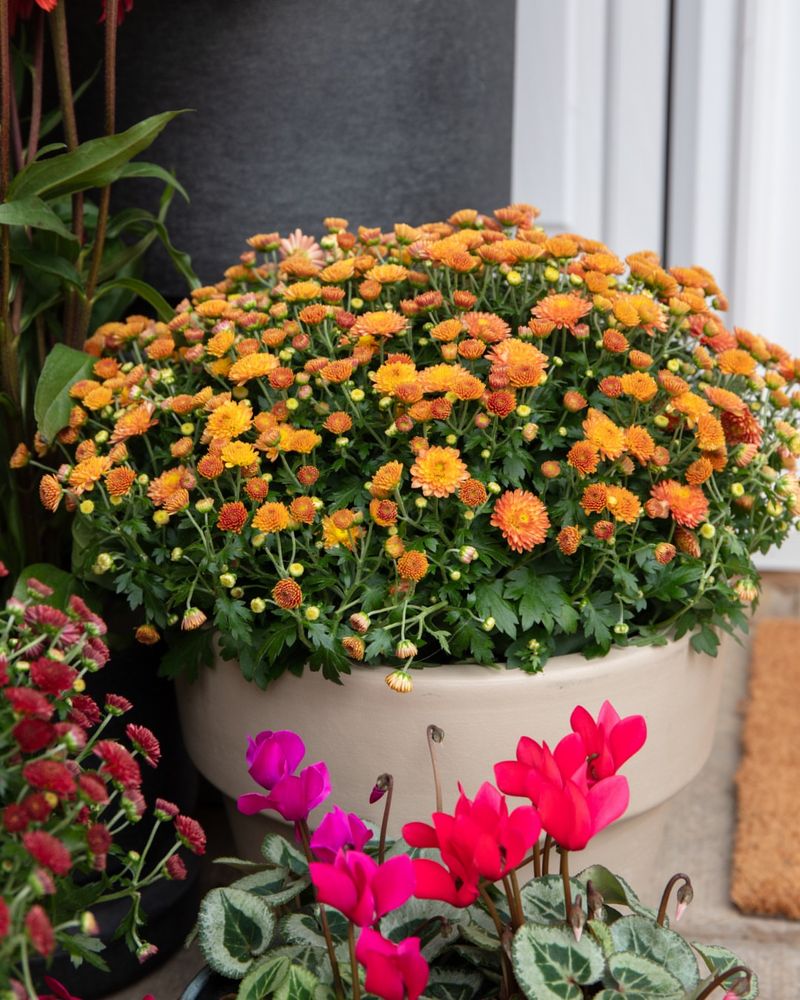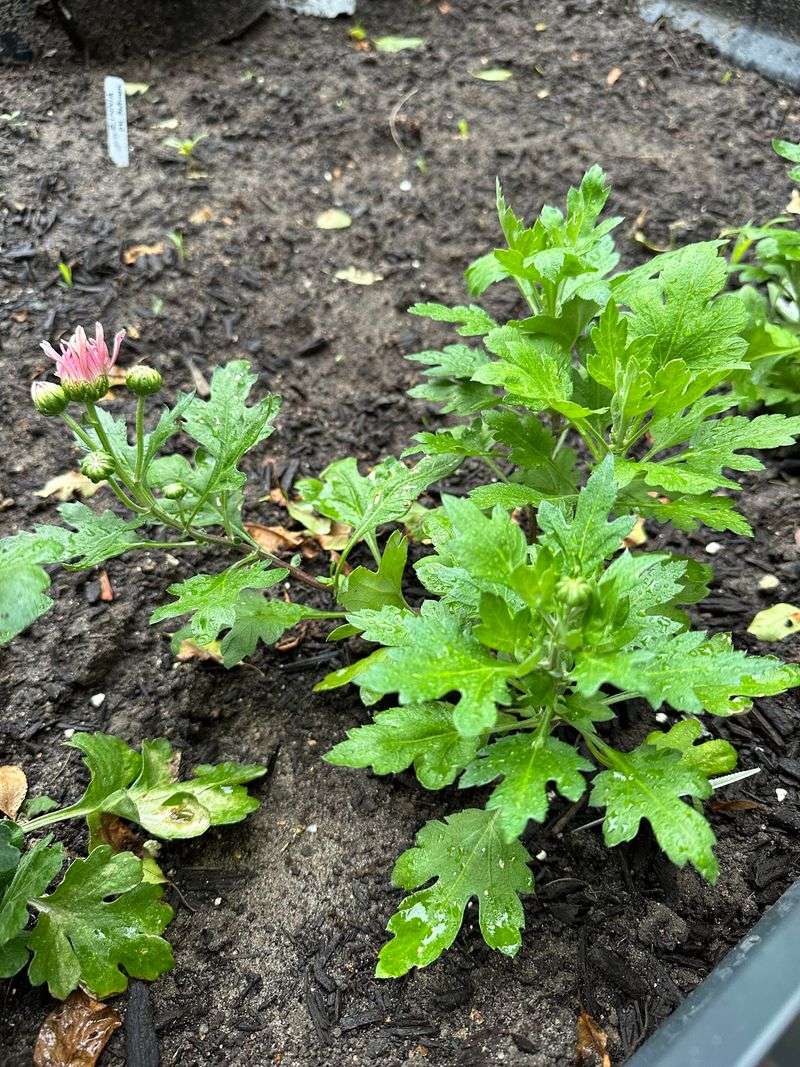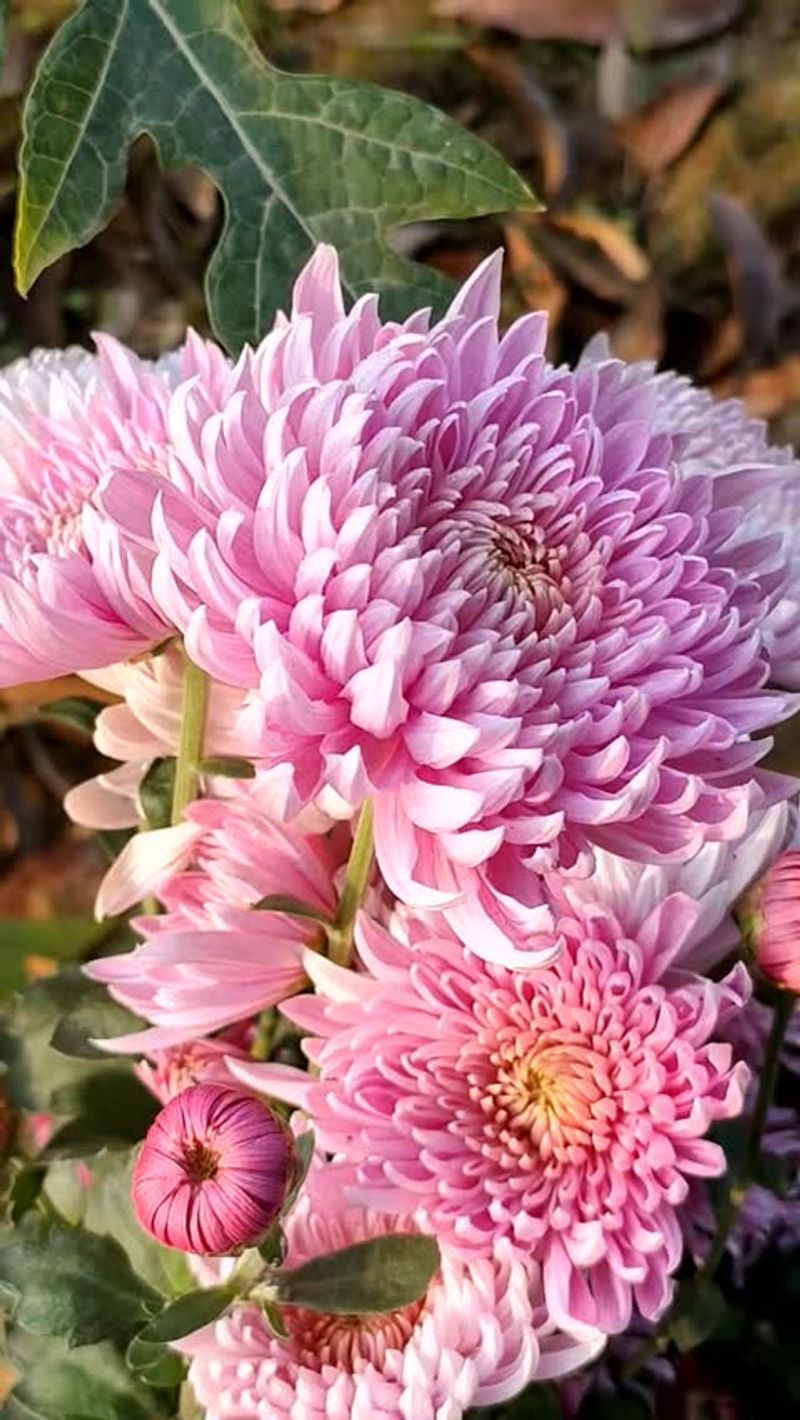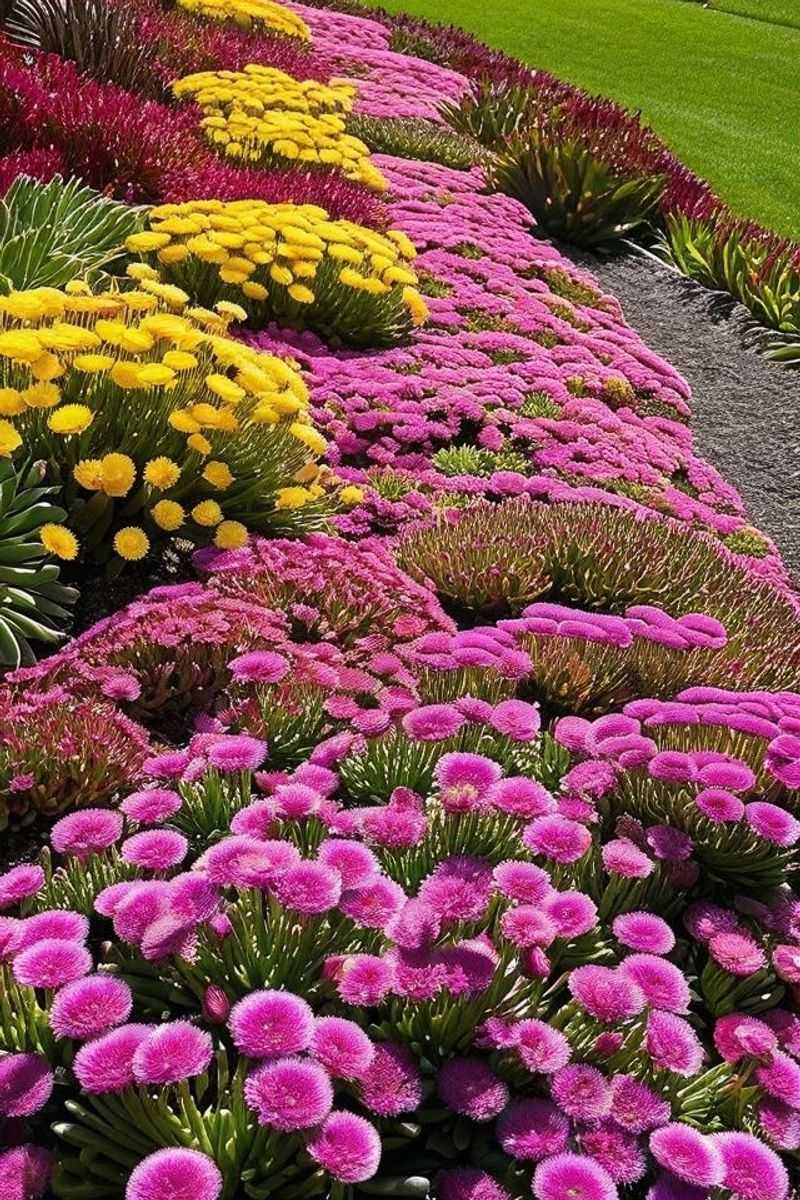Fall in California brings perfect weather for chrysanthemums to shine in your garden. These colorful flowers add vibrant splashes of autumn hues just when other plants start fading.
With California’s unique climate challenges, from coastal fog to inland heat, keeping mums looking their best requires some special attention.
1. Morning Watering Magic
Early morning is the golden hour for watering your mums in California yards. The gentle morning sun allows plants to dry gradually before afternoon heat arrives.
Avoid evening watering which leads to overnight dampness and fungal problems common in coastal areas. Aim for the soil, not the flowers, using a gentle stream that hydrates roots without damaging delicate blooms.
2. Deadhead Like A Pro
Snipping away spent blooms triggers your mums to produce more flowers throughout the fall season. Grab small scissors or pruners and look for browned petals or flowers past their prime.
Cut just below the flower head, right above the first set of healthy leaves. Regular deadheading every 3-5 days makes an enormous difference in bloom production and prevents the plant from wasting energy on seed formation.
3. Mulch To Maintain Moisture
California’s fluctuating temperatures make mulch your mum’s best friend. A 2-inch layer of organic mulch keeps soil temperatures stable and roots happy despite our afternoon heat spikes.
Pine needles, shredded bark, or compost work beautifully. Keep the mulch slightly away from stems to prevent rot. This simple barrier also stops weeds from stealing nutrients and helps retain precious moisture between waterings.
4. Feed For Fall Flourishing
Mums get hungry during peak blooming season! A phosphorus-rich fertilizer encourages abundant flowers while balancing nitrogen prevents leggy growth that topples in our autumn winds.
Look for a 5-10-5 or similar ratio and apply half-strength every two weeks. Water thoroughly after feeding to prevent root burn. California’s extended growing season means your mums benefit from this regular nutrition well into November in most regions.
5. Strategic Sun Placement
California’s autumn sunshine varies dramatically from coast to inland. Coastal mums thrive in full sun locations that inland gardeners would consider too harsh.
If you’re in hot inland areas, position mums where they receive morning sun but get afternoon shade. Near the coast, give them at least 6 hours of direct sun. Proper placement prevents both sunscald and the stretched, sparse growth that comes from insufficient light.
6. Container Rotation Routine
Potted mums often grow lopsided as they reach toward the sun. Establishing a rotation schedule keeps plants beautifully symmetrical throughout the fall display season.
Turn containers a quarter turn every 3-4 days. This simple habit ensures even growth and prevents the dreaded one-sided bloom effect. For California patios and decks that receive uneven light, this technique transforms ordinary mums into show-stopping specimens.
7. Pinch Back For Bushiness
Many California gardeners miss the opportunity to create fuller mums by skipping the pinching process. For newly purchased plants, gently pinch stem tips when buds are just forming but not yet showing color.
Remove about half an inch from growing tips using your fingers. This encourages side branches to develop, creating a rounded, fuller plant with more flowers. Stop pinching by early September to allow fall blooms to develop normally.
8. Pest Patrol Protection
California’s mild climate means pests stay active longer than in colder regions. Aphids and spider mites particularly love mums and can quickly damage beautiful blooms.
Check the undersides of leaves weekly and spray with a gentle stream of water to dislodge these pests before they multiply. For persistent problems, try insecticidal soap applied in early morning. This non-toxic solution preserves beneficial insects while protecting your mums.
9. Seasonal Spacing Secrets
Mums in California gardens often suffer from poor air circulation due to overcrowding. When planting or arranging potted mums, leave 18-24 inches between plants to allow air movement.
Good spacing reduces humidity around foliage and prevents the spread of powdery mildew, a common problem in coastal areas. As an added benefit, properly spaced mums develop their natural rounded shape rather than growing distorted as they compete for light and space.

